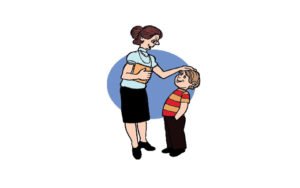
A new comprehensive study under the title “Positive Greetings at the Door: Evaluation of a Low-Cost, High-Yield Proactive Classroom Management Strategy” revealed that teachers greeting students at the classroom door sets a positive tone and can increase engagement and reduce disruptive behaviour.
If the teacher spends a few moments before the commencement of class in welcoming students, it can promote a sense of belonging, build social and emotional support that helps students feel invested in their learning, the study explains.
For the study, the researchers took 203 students in 10 classrooms and validated their claim.
Previously, in 2007 study under the title “Effects of Teacher Greetings on Student On-task Behavior” claimed that teachers greeting students at the classroom door led to a 27 percentage point increase in academic engagement.
At the beginning of the class students often seem inattentive as it is difficult for them to transit themselves from busy areas like playground or festival and the disruptions become difficult to manage for teachers, but a proactive approach to classroom management can help students get focused and ready to learn.
Rather than addressing disruptive behaviour as it happens, proactive techniques—like greeting students at the door and modelling good behaviour—reduce the occurrence of such behaviour as teachers and students build a positive classroom culture together.
The study states that when teachers begin class by welcoming students at the door, academic engagement increased by 20 percentage points and disruptive behaviour decreased by nine percentage points—potentially adding “an additional hour of engagement over the course of a five-hour instructional day.”
“The results from this study suggest that teachers who spend time on the front end to implement strategies such as the PGD [positive greetings at the door] will eventually save more time on the back end by spending less time reacting to problem behaviour and more time on instruction,” the study authors write.
As the nonverbal gestures like handshake or thumbs-up make greeting more authentic, so it is essential to keep in consideration following steps: Say the student’s name, make eye contact, use a friendly nonverbal greeting, such as a handshake, high five, or thumbs-up, Give a few words of encouragement and ask how their day is going.
As students, a welcoming classroom environment helps teachers too- it can improve the teacher’s mental health. Often the teachers feel stressed by student disengagement or disruptions in the classroom, and the consequences can be severe.
Mostly, teachers spend time and energy in correcting the misbehaviour of students, such as telling students to stop talking or giving them a time-out. Such kind of strategies works in the short term and damage teacher-student relationships. Research shows that it can be beneficial for student and teacher well-being to instead focus on creating a positive classroom environment.
Remember: When students feel welcome in the classroom, they are more willing to put time and effort into learning.

